On this week’s Rocket Roundup, Russia launches a long-delayed ISS module with a new space toilet, New Shepard conducts its first crewed launch, and China launches some more secret satellites. Plus, this week in rocket history, we look back at Apollo 11.
Podcast
Transcript
Hello, and welcome to the Daily Space. My name is Annie Wilson and most weekdays the CosmoQuest team is here putting science in your brain.
Today, however, is for Rocket Roundup. Let’s get to it, shall we?
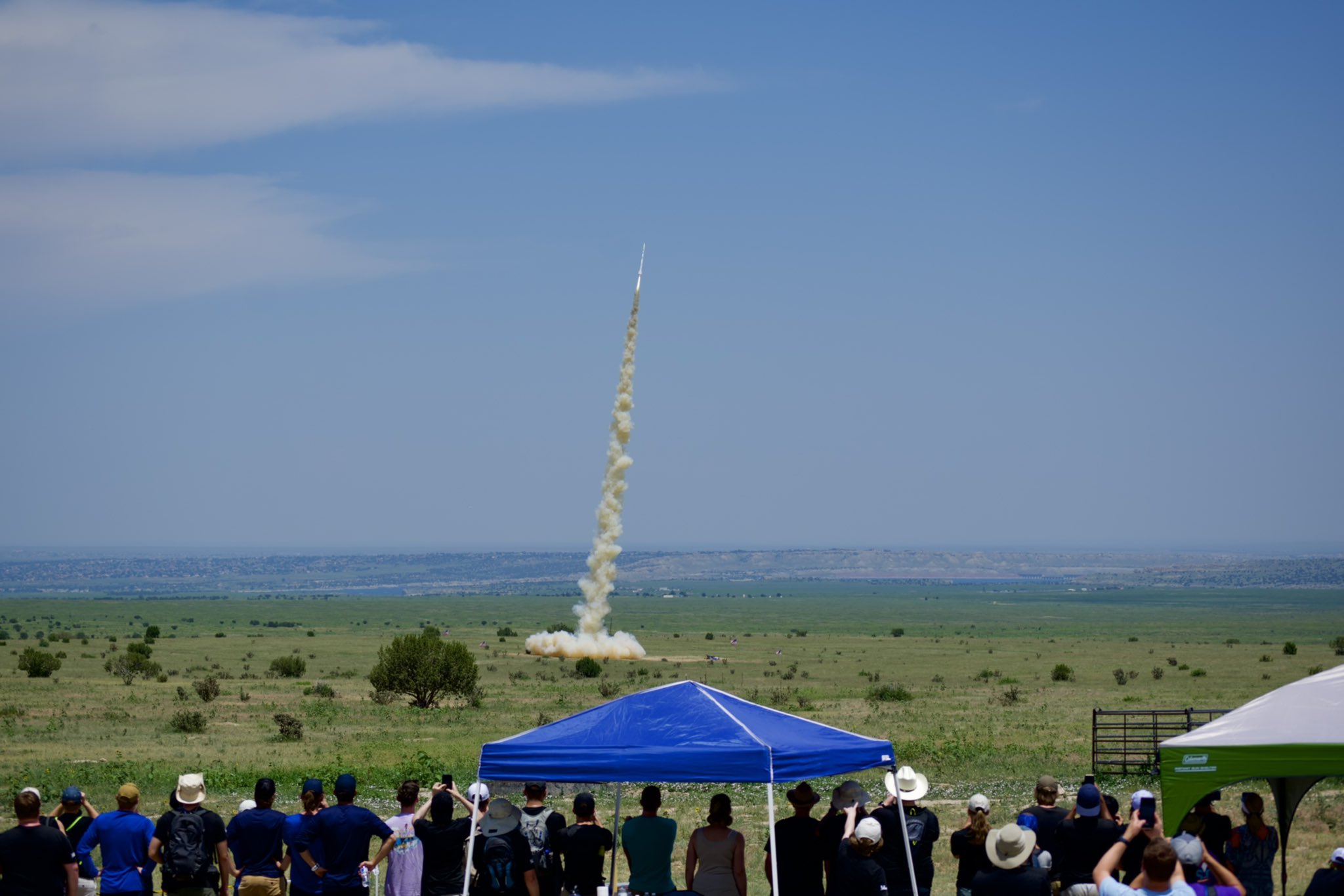
On July 17, the United Launch Alliance (ULA) Intern Rocket Program launched three rockets named Bacon, Lettuce, and Tomato from the Hudson Ranch Launch Site in Pueblo, Colorado. This was the twelfth year of the program, which allows interns from all of ULA’s sites to get experience working on hardware and network with more experienced mentors.,
The three rockets were identical, and each was powered by an O-class motor, a type of high-power sport rocket motor, that allowed them to reach an altitude of 1.2 kilometers. An O-class motor is basically like the small Estes motor you may have used in a model rocket, just bigger.
Motors of this power require the user to hold a Level 3 certification from one of the high power rocket organizing bodies, Tripoli or NAR. A Level 3 certification requires the user to have a Level 2 certification and experience flying level 2 rockets before obtaining a level 3 certification to construct and fly a rocket that meets a list of very detailed requirements relating to construction and documentation.
Many different payloads including parachute tests, airbag deployment, and even simulated Mars and lunar landers were on the rockets from twenty teams ranging from K-12 all the way to universities from all across the country, from Massachusetts to California to Texas.
After landing, the payloads were evaluated in three categories: payload design, testing, and performance, and the winning teams were awarded ULA swag packs. The rockets launched the in order of Lettuce, Bacon, Tomato. All were recovered successfully.
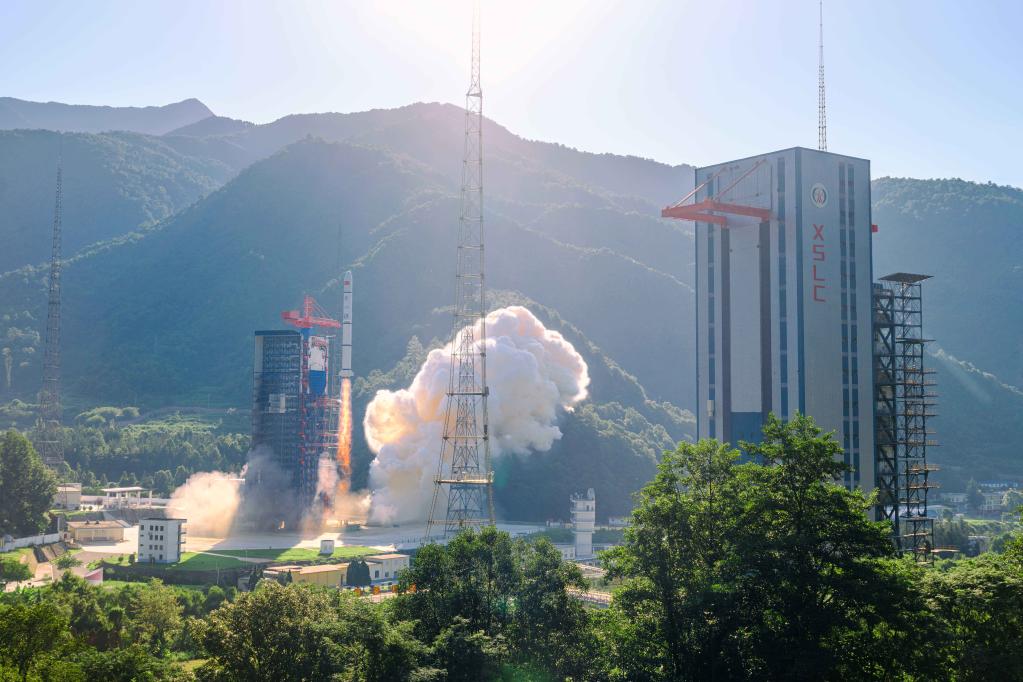
On July 19 at 00:19 UTC, a Long March 2C launched the tenth triplet of Yaogan 30 remote sensing satellites for the Yaogan constellation. Like nearly every Chinese remote sensing satellite, even the officially civilian ones, the satellite’s mission was described as “electromagnetic environment detection and related technical verification.” Also onboard was Tianqui 15, part of a commercial Internet Of Things constellation.
One interesting thing about this launch is that the Long March 2C rocket had parachutes on its fairings, though not for recovery and reuse, but to constrain the place that they impact after separation. While previous Long March rockets have had chutes on the fairings, this vehicle had parachutes that opened higher than the previous flights, to further reduce the size of the impact area.
After nearly thirty years of development, the Nauka science Multipurpose Laboratory Module was launched into orbit on July 21 at 14:58 UTC from the Baikonur Cosmodrome in Kazakhstan on a Proton-M rocket. It will take about a week for it to make it to the ISS, with docking expected on July 29. However, there’s a bit of space Tetris needed before it can actually dock with the ISS.
At the time of launch, the Pirs module was occupying the Earth-facing port of the Zvezda module on the Russian part of the ISS. It will be undocked from the ISS a couple of days after the launch of Nauka. The Progress MS-16 vehicle currently docked to Pirs will undock with the module attached, and send Pirs to a destructive reentry in the ocean southwest of Australia.
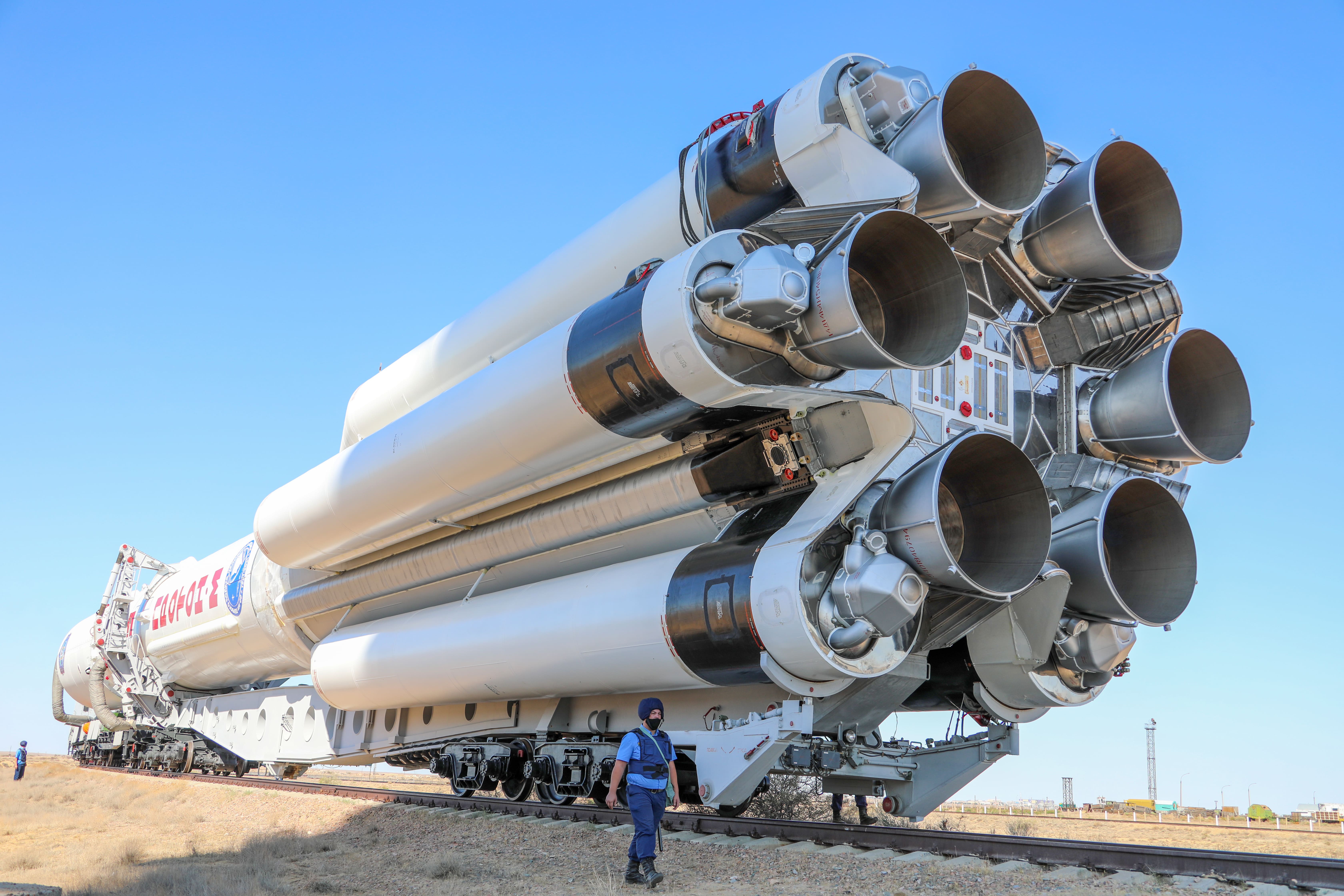
Nauka has a long and tortured development history. It was originally built in 1995 from even older spare parts manufactured for the Mir-2 station. It was supposed to be a backup in case of problems with the Zarya module. Luckily, Zarya successfully launched in 1998, marking the beginning of the assembly of the International Space Station. This left Nauka stuck on the ground.
In 2004, plans were started to launch it into space in 2007. After an incredible number of delays that left people wondering if it would ever launch, including one major delay in 2019 as a result of contamination of the propellant tanks with sawdust, it was finally sent for testing in 2020. Naturally, this was delayed by the coronavirus pandemic. Testing was completed late last month following which the module was integrated with its Proton rocket.
On July 17, just a few days before launch, the fully assembled rocket and spacecraft were rolled out to Site 200 at the Baikonur Cosmodrome. The launch was nominal, and we’ll have a report for you when it docks to the ISS.
Blue Origin’s New Shepard 16 set some new records, including both the youngest and oldest persons to fly into space.
On July 20 at 13:00 UTC. a Blue Origin New Shepard rocket launched its first crewed flight into space. Onboard were company CEO Jeff Bezos, his brother Mark, Wally Funk of the “Mercury 13”, and Oliver Daemen, son of Joes Daemen, a Dutch hedge fund manager.

The launch of the New Shepard itself was completely nominal, with a few holds during the countdown sequence prior to launch. Capsule separation was uneventful, and the capsule reached an apogee of 107 kilometers followed by a parachute landing for a total flight time of about 11 minutes. After capsule separation, the four passengers were allowed to unbuckle and float around the cabin for a few minutes.
After landing, the four passengers were successfully helped from the capsule by ground crews in electric pickup trucks. A key part of the safing procedure is installing a ground cable as the capsule picks up quite the static charge during its flight through the atmosphere, and it can be hazardous for passengers to get out by themselves if it’s not grounded first. A crowd of media and the passengers’ families were there to greet them at the landing site.
According to New Shepard Senior Engineer Gary Lai on the webcast, the landing site can be predicted to within about 300 meters before launch from wind measurements, which is how the ground crew got to the capsule within minutes of landing. They were whisked away to a press conference where they talked about their experiences, reminiscent of classic space press conferences from the Apollo era.
As I mentioned at the beginning of the story, there were several records set, including those for the youngest and oldest people to go to space.
Wally Funk was one of thirteen women who later became known as the “Mercury 13”. In 1961, a group of thirteen women successfully completed a set of medical evaluations similar to those of the male Mercury 7 astronauts with the help of a private group of doctors. They petitioned Congress to be accepted to NASA but were denied.
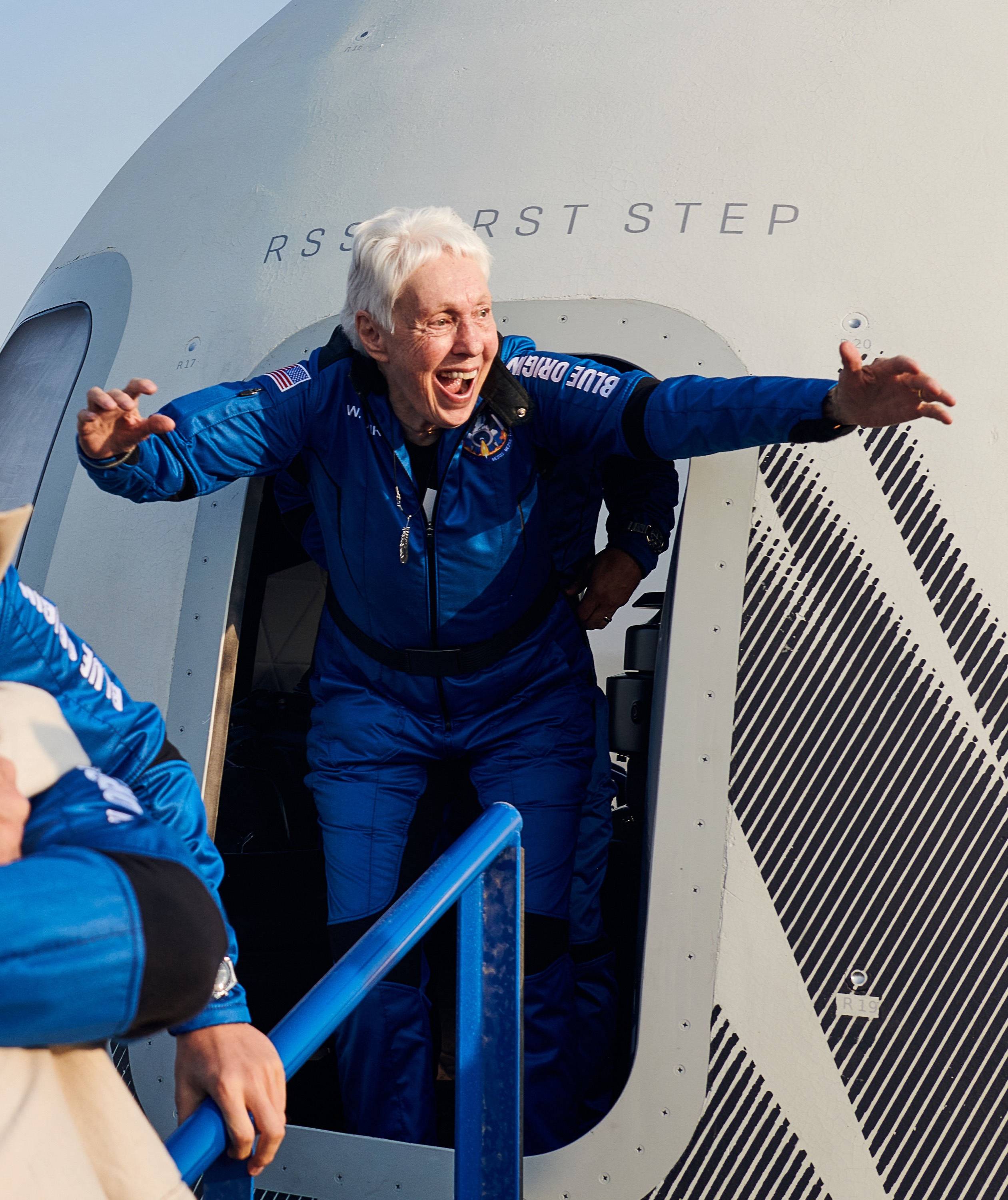
Now 82 years old, Wally became the oldest person to fly into space on this flight, surpassing John Glenn who returned to space on Discovery’s STS-95 when he was 77. She has wanted to go into space for a long time and even put down a deposit for a seat on the Virgin Galactic SpaceShip 2 back in 2012.
Wally wanted to fly from a young age and took her first flight as a passenger at age nine. She got her pilot’s license in her teenage years at Stephen’s College in Missouri. She became a flight instructor after college and was the first female flight instructor at Fort Sill in Oklahoma. Later, she worked for the FAA, becoming the first female Aviation Operations Inspector, and later she went to the National Transportation Safety Board as an Air Safety Inspector. She is qualified to fly everything from gliders to large airliners and has accumulated over twenty thousand flying hours.
The record for the youngest person to fly in space went to eighteen-year-old Oliver Daemen, son of Joes Daemen who came second in an auction for the first paid seat on New Shepard. Another person had made the winning $28 million bid but had to reschedule from this flight, so Oliver was moved up to this flight.
In addition to being the youngest person to fly in space, he is only the fourth person from the Netherlands to do so. He’s currently on a gap year after graduating from the Dutch equivalent of high school, during which time he has spent getting his pilot’s license. Daemen will be attending the University of Utrecht to study physics and innovation management starting in September.
Though not a confirmed record, this is probably one of the most expensive graduation presents ever!
The previous record-holder for youngest space traveler was Gherman Titov who flew on Vostok 2 back in 1961 at age 25. He still holds the record for the youngest person to make an orbital flight. This record will stand for some time as the youngest person on the upcoming Inspiration4 orbital flight on a SpaceX Crew Dragon, Hayley Arceneaux, is 29.
This Week in Rocket History

This week in rocket history, Apollo 11. Apollo 11 launched from Pad 39A at Kennedy Space Center on July 16, 1969, at 13:32 UTC. About three days later on July 20, Neil Armstrong and Buzz Aldrin became the first humans to land on the lunar surface after leaving Michael Collins in the Command Module Columbia in lunar orbit.
The landing was almost aborted early in the descent after the 1201 and 1202 master program alarms flashed on the computer display several times. Neither crewmember had any idea what the alarm meant, but two flight controllers in Mission Control remembered the alarm from a simulator run and knew it wasn’t an issue, clearing Neil and Buzz to continue to the surface.
So that 1202 master alarm: what was it and why was it okay to ignore it? Basically, the alarm was the computer screaming at the commander that it had been given too much to do at one time, which caused it to become overloaded. In order to correct the issue, the pilot needed to turn off some functions. The overload was caused by running the descent program and the rendezvous radar at the same time, which had been started by Buzz to save time in the event of an abort.
The 1201 alarm is probably something you may have experienced yourself. It signaled that the overload was from a program loaded into RAM. (RAM at the time was only four kilobytes, so it didn’t take much to cause an overflow.)
The alarms weren’t the end of the excitement during this very eventful landing. Most of it was done on autopilot, but Neil took over manual control after he saw the landing site the computer was headed to was filled with massive boulders. He came within what he thought was about 25 seconds of depleting the propellant in the descent stage when he should have had 120 seconds worth of propellant in reserve. In actuality, the propellant was sloshing around in the tank causing false low propellant warnings when there was actually more propellant than indicated.
One other tense incident occurred when the astronauts were preparing to depart the lunar surface. At some point during their time on the surface, one of the astronauts accidentally broke off the switch to the breaker that controlled the ascent stage engine ignition circuit. If they couldn’t flip the switch they wouldn’t be able to go back into lunar orbit to meet up with Collins and return to Earth in Columbia. Luckily, Aldrin was able to shove the cap of a felt tip pen into the circuit breaker, completing the circuit and sending them on their way into history as the first humans to land on the Moon and return.
Overall, Armstrong and Aldrin spent just over two and a half hours out of a total of 21 hours and 36 minutes on the Moon exploring the surface, collecting samples, and setting up experiments.
The lunar module Eagle rejoined with Collins in the Command Module, and the three of them returned home. Splashdown in the Pacific Ocean southwest of Hawaii took place on July 24, 1969, at 16:50 UTC, thus concluding humanity’s first crewed mission to the surface of the Moon.
Statistics
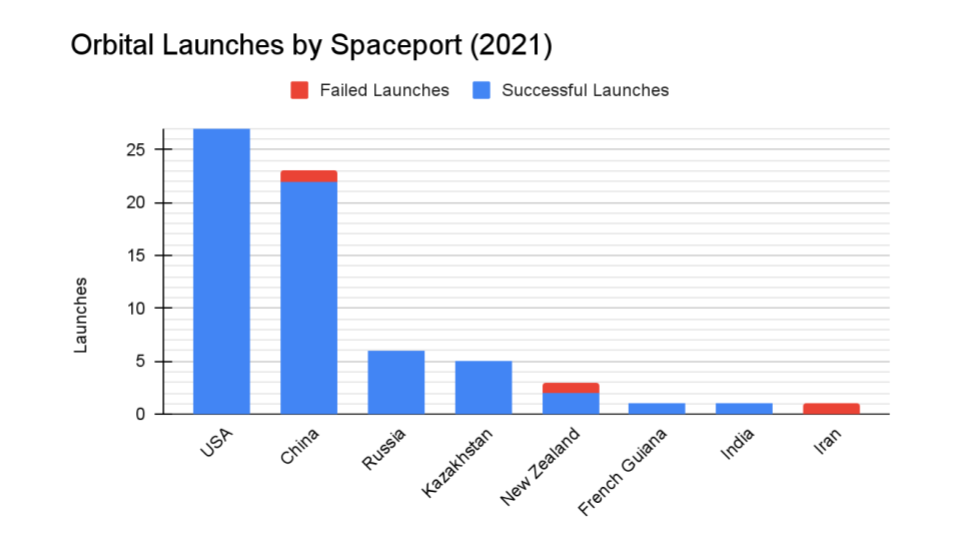
To wrap things up, here’s a running tally of a few spaceflight statistics for the current year:
Toilets currently in space: 8: 3 installed on ISS, 1 on the Crew Dragon, 1 on the Soyuz, 1 on the Shenzhou, 1 on Tianhe, and 1 on the Nauka module.
Total 2021 orbital launch attempts: 69, including 3 failures
Total satellites from launches: 1304
I keep track of orbital launches by where they launched from, also known as spaceport. Here’s that breakdown:
USA: 27
China: 24
Kazakhstan: 6
Russia: 6
New Zealand: 3
French Guinea: 1
India: 1
Iran: 1
Random Space Fact
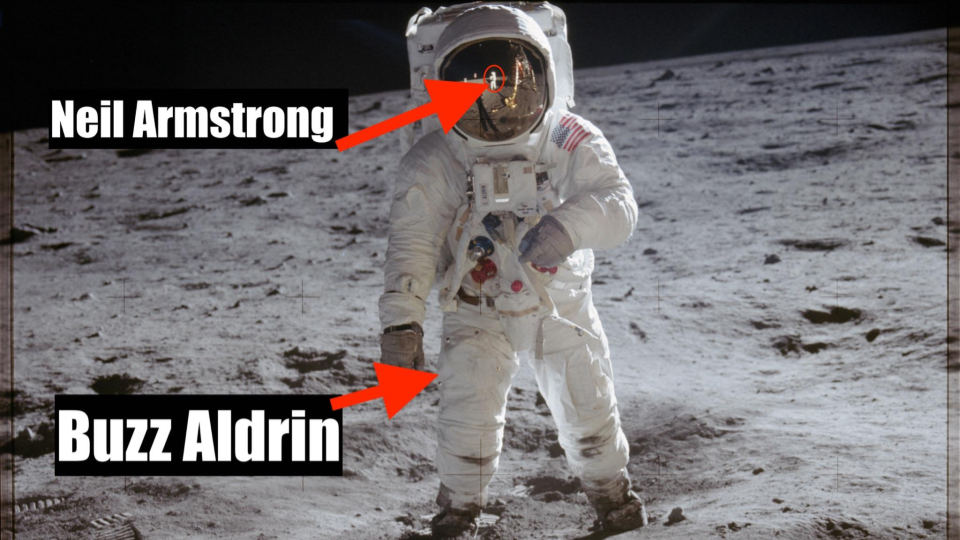
Your random space fact for this week is that there are no direct photos of Neil Armstrong on the lunar surface during the Apollo 11 mission because he had the camera. The famous photo of a suited astronaut on the surface during the mission is actually Buzz Aldrin with Neil reflected in his visor.
Learn More
BLT Rockets Launch for ULA’s Interns
China Launches Tenth Trio of Yaogan 30 Satellites
Russia Launches Nauka Multipurpose Lab to ISS
- Module Nauka docked with the intermediate compartment (Roscosmos) (Russian)
- Nauka ISS module sent off to Baikonur (Roscosmos)
- Nauka module launch scheduled for July 21 (Roscosmos)
- Launch of Russia’s Nauka research module to orbital outpost rescheduled for July 21 (TASS)
- Pirs module being prepared for undocking (Roscosmos)
- Proton-M rocket with Nauka installed at the launchpad (Roscosmos)
- MLM-U info page (Gunter’s Space Page)
- Launch video
New Shepard’s First Crewed Launch a Success!
- Lovelace’s Woman in Space Program (NASA)
- Woman in Space: The Long-Delayed Flight of Wally Funk (Time)
- Wally Funk (Ninety-Nines)
- Blue Origin reveals runner-up in $28 million auction will fly with Jeff Bezos to space next week (CNN)
- First Paying Customer on New Shepard Will Be the Youngest to Fly to Space (Blue Origin)
- Launch video
This Week in Rocket History: Apollo 11
- Apollo 11 Mission Overview (NASA)
- Trying to Rest (NASA Transcript)
Credits
Host: Annie Wilson
Writers: Gordon Dewis, Pamela Gay, Erik Madaus, Ally Pelphrey, and Annie Wilson
Audio and Video Editing: Ally Pelphrey
Content Editing: Beth Johnson
Executive Producer: Pamela Gay
Intro and Outro music by Kevin MacLeod, https://incompetech.com/music/


 We record most shows live, on Twitch. Follow us today to get alerts when we go live.
We record most shows live, on Twitch. Follow us today to get alerts when we go live.